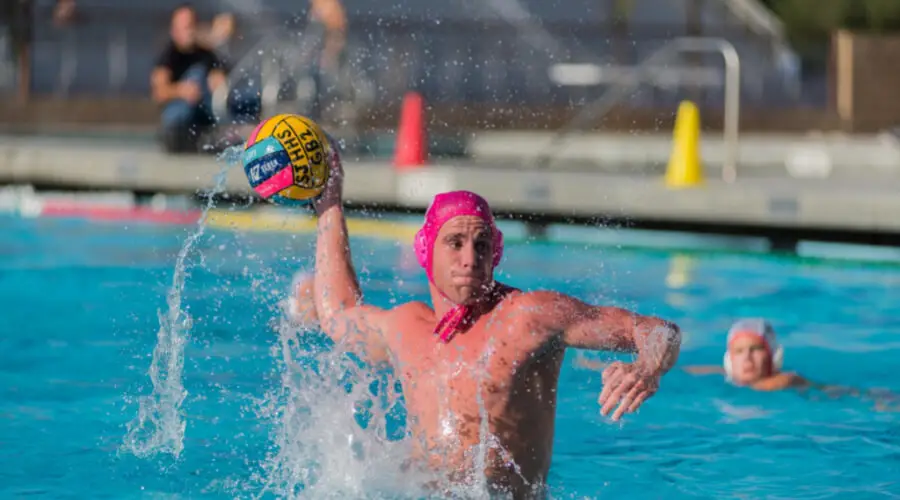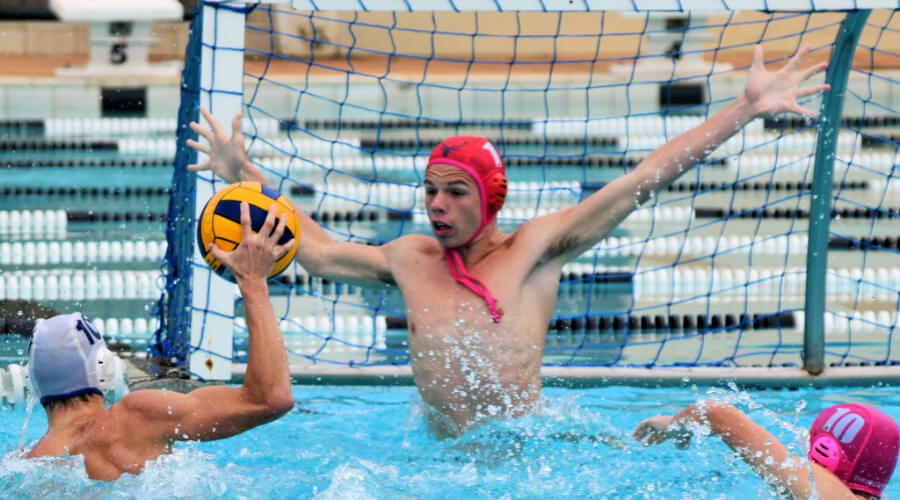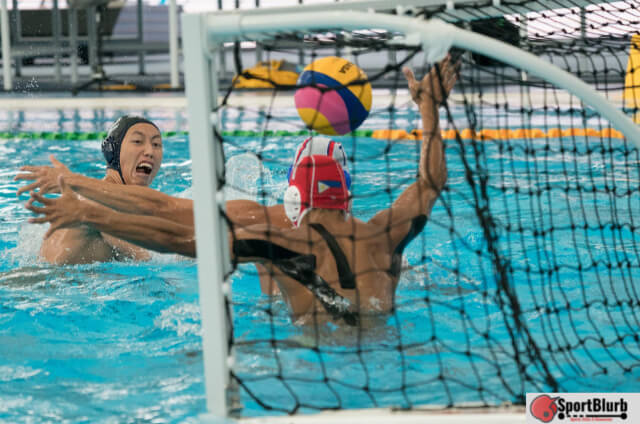Last Updated on October 16, 2023 by Alex PT
Yes, water polo is a recognized sport. It’s a physically demanding team sport played in the water, with teams competing to score goals. It’s part of the Olympic program and has a global following.
Is Water Polo a Sport?
1. Origin and Evolution:
Water Polo is a sport that originated in England and Scotland during the 19th century. Initially, it was introduced as a derivative of rugby football played in lakes and rivers. Over time, the sport has evolved substantially and is now played under different rules worldwide.
2. The Game Objective:
The objective of water polo is to score more goals than the opposing team within the specified game duration. Players do this by throwing the ball into the opponent’s goal, which is a rectangular net suspended two meters above the water level.
3. Physical Requirements:
Water polo requires a high level of endurance, strength, and physical conditioning. Players must be excellent swimmers and possess good hand-eye coordination for accurate ball throwing. The sport is highly physical, involving a lot of movement and agility underwater.
4. Skill Demands:
Aside from physical strength, water polo also requires technical skills and tactical understanding. Players must be adept at handling the ball, positioning, and making strategic decisions. Teamwork is crucial as players have to coordinate their moves to outsmart their opponents.
5. The Playing Field:
A standard water polo field measures 30 meters long and 20 meters wide. The bottom of the pool must be flat and its depth at least 2 meters throughout the field. Marking lanes, goal lines, and other areas of the playing field are crucial for the correct playing of the sport.
6. Teams and Roles:
Each team comprises seven players, including a goalkeeper. The remaining six players are field players, divided into attackers, midfielders, and defenders based on their tactical roles. Substitutions are allowed during the game but only in designated areas.
7. Governing Bodies:
Water polo is governed globally by the FINA (Federation Internationale de Natation), while individual countries have their national bodies. These bodies regulate the rules, organize tournaments, and promote the sport.
8. Tournament and Recognition:
Water Polo is recognized internationally and is a part of various tournaments, including the Olympic Games. The sport offers both women’s and men’s events at the Olympics.
How physical is water polo?
Water polo is an extremely physical sport. Here are details on its physical nature:
- Endurance: Players must swim continuously, covering long distances during a game, demanding excellent cardiovascular endurance.
- Strength: The sport requires strength for actions like treading water, grappling with opponents, and throwing the ball.
- Treading Water: Athletes must tread water for extended periods, using their legs for stability while using their arms for gameplay.
- Contact: Physical contact is a fundamental aspect of water polo. Players jostle for position, hold, push, and even wrestle opponents, often underwater.
- Speed: Players need explosive speed to break away from defenders and close in on the goal.
- Agility: Water polo requires quick changes in direction and agility, as players need to maneuver in the water.
- Coordination: Precise ball handling, shooting, and passing demand exceptional hand-eye coordination.
- Endurance: Games typically consist of four quarters, each lasting around eight minutes, with limited breaks, demanding mental and physical stamina.
- Safety: Referees enforce rules to ensure safety, as overly aggressive play can result in penalties or exclusions from the game.
Brief History

In the mid-19th century, water polo was originated in Scotland by William Wilson as a sort of “water rugby”. The game later was widely accepted by people in parts of Europe, the United States, Brazil, China, Canada, and Australia as it began to expand after the London Water Polo League was formed. In the beginning, the game was really bodily as players were allowed to use their physical strength to get the ball from opponents. So, you can imagine that there would be heavy body contact and impacts.
In the mid-19th century, the Scottish and British showed their great admiration for racing exhibitions and water sports as a feature of county carnivals and fiestas, and that’s why the game of water polo started as a demonstration of swimming skill and strength. William Wilson developed the rules of water polo in late nineteenth-century Great Britain. In the 1900 Olympics, the water polo for men category was one of the first team sports to be recognized and introduced.
On the 15th of September 1873, there was an antecedent of the modern game of water polo at the 4th Open Air Fete of the London Swimming Club, Crystal Palace, London. Another water polo event came up on the 13th of July 1876 at Bournemouth between 12 members of the Premier Rowing Club.
Rules Of Water Polo

The rules of water polo have to do with the gameplay, procedures, equipment, and officiating. These rules are universal and apply to all levels of play, but there might be slight variations depending on the governing body and the country of play. The following are the major governing bodies of water polo. They include (IOC): International Olympic Committee which governs the rules at Olympic events, (NFHS): National Federation of State High School Associations which governs the rules in high schools in the United States, and (NCAA): National Collegiate Athletic Association which governs the rules for collegiate matches in the United States.
Basic Rules Of The Game
1. The playing surface area is 30m x 20m with the lowest depth of 2m.
2. Each team should have 13 players in total, with only 7 players in play at any time, 1 goalkeeper, and 6 field players
3. Field players are not allowed to use two hands to hold the ball at any point in the game. Only the goalkeeper is allowed to do that within 5m of his own goal.
4. There are four quarters in the game, and each quarter lasts for eight minutes with a two-minute break between quarters.
5. Players can only move the ball upfield by swimming with it in front of them or bypassing another teammate.
6. No player should touch the bottom of the pool at any point in the game and players must tread water throughout the match.
7. A team can only hold on to the ball for 30 seconds without shooting at the opponent’s goal.
8. A point is earned when a goal is scored. A goal is scored when the ball is thrown completely under the crossbar and between the goalposts.
9. There are two major types of fouls in the game. The ordinary fouls and major fouls. Players are excluded from the game after having more than three major fouls.
10. A shootout is used to decide the winner if the score remains tied at the end of the game.
Object Of The Game
The object of water polo is to play as a team to score more points than the opposing team to become the winner of the match. It is common to see high-scoring games in water polo, with some teams capable of scoring more than 20 goals each.
Players & Equipment
A water polo team consists of seven active players playing in the pool at a time. This includes one goalie and six field players. The gameplay of water polo is unique as players move from one position to another as the game demands. Unlike other team sports like basketball or football where players have a certain position to keep to, positions are either defensive or offensive in water polo. All the players are involved in both the offensive and defensive roles. In terms of playing equipment, water polo doesn’t require much. Players wear trunks or swimsuits depending on sex and goggles and swimming caps if required. The basic equipment for playing water polo is a net and a ball.
Scoring
In water polo, a goal is scored when the ball is completely thrown into the goalposts and below the crossbar. A team is only allowed to hold on to the ball for 30 seconds without shooting for a goal. However, a team can retain possession of a ball after making the shoot for a goal, and the ball rebounds.
Winning The Game
The team with the most points at the end of the game wins the match. But if a match is tied at the end of the game, a penalty shootout is used to determine the winner. Five players will be chosen from each team to shoot directly from the 5m line.
Countries Participating In Water Polo
Water polo is played by both men and women, but the number of participating nations for men is much more than the women. Some of the popular countries in the category of men include the US, Great Britain, Hungary, Italy, Netherlands, Soviet Union, and Yugoslavia while countries like Australia, Greece, and Italy are popular in the women’s category.
Final Words
Water polo is one of the toughest sports out there It is played in a swimming pool by two opposing teams with seven players each. The game is played in four quarters, and the object is to score more goals by shooting the ball into the goal of the opposing team. We’ve come to the closing chapter of this informative article. We hope you were able to find good and reliable resources in your quest to know if water polo is a sport. If you have any questions or comments about the article topic, don’t hesitate to contact us. Thanks!
References:
https://www.britannica.com/sports/water-polo
https://en.wikipedia.org/wiki/Water_polo

Hi! I’m Alex PT. I hold a Bachelor’s degree in Sports Management from Indiana University and have over seven years of valuable experience working in a Sports Event Management Company. I founded SportBlurb with the passion for bringing you the latest, most insightful, and engaging content in the world of sports. So, whether you’re a die-hard fan or want to stay informed, I’ve got you covered!

